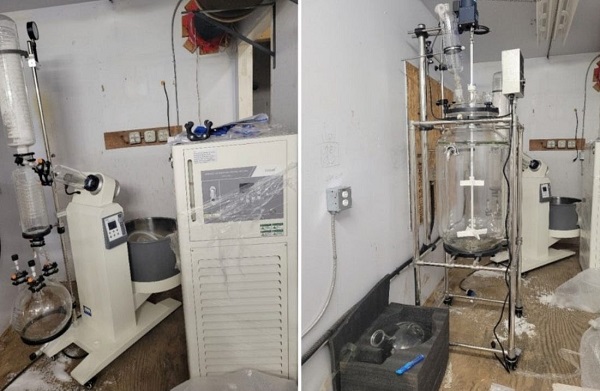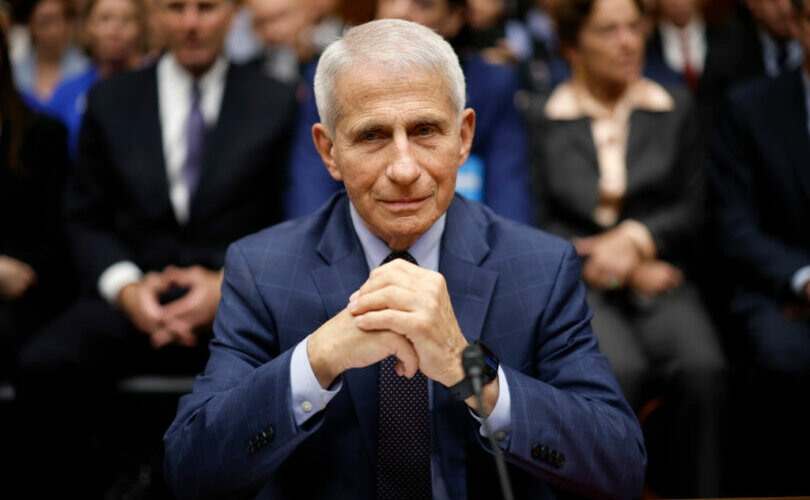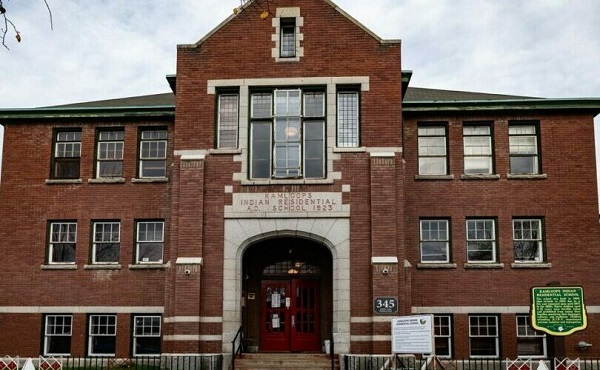Business
Ottawa once again defends egregious mismanagement during COVID

From the Fraser Institute
By: Jake Fuss and Tegan Hill
Two federal cabinet ministers criticized the report because it “fails to properly acknowledge that CEBA was designed and delivered during a global pandemic.” Translation—taxpayer money can be mismanaged so long as it’s delivered quickly, and we can use an emergency as an excuse for wasteful spending
According to a new report by Canada’s auditor general, in another of example of mismanagement and waste during the COVID pandemic, nearly 10 per cent—or $3.5 billion—of the federal government’s Canada Emergency Business Account (CEBA) loans went to ineligible businesses.
The report said “the program was not managed with due regard for value for money” and the government “did not effectively oversee the CEBA program.”
In response, two federal cabinet ministers criticized the report because it “fails to properly acknowledge that CEBA was designed and delivered during a global pandemic.”
Translation—taxpayer money can be mismanaged so long as it’s delivered quickly, and we can use an emergency as an excuse for wasteful spending. Accountability to the public is evidently an afterthought.
Of course, this is only the latest revelation of Trudeau government mismanagement during COVID. The government spent huge sums of taxpayer money on expensive programs such as the Canada Emergency Wage Subsidy (CEWS) and Canada Emergency Response Benefit (CERB). But a substantial share of this spending was simply wasted.
For example, an earlier report in 2022 by the auditor general found that ineligible individuals received $4.6 billion in CERB payments and other benefits. Ineligible recipients included 1,522 prisoners, 391 dead people and 434 children too young to be eligible. And 51,049 employers incorrectly received $9.9 billion in wage subsidies even though they did not have a sufficient drop in revenue to be eligible for the subsidies.
The federal government also spent billions on Canadians who probably didn’t need the money. An analysis published in 2020 by the Fraser Institute estimated that $11.8 billion in CERB payments went to eligible young people (ages 15 to 24) living with their parents in households with at least $100,000 in income. And an estimated $7.0 billion in CERB payments went to spouses in families with at least $100,000 in household income.
COVID-related programs were not only poorly targeted, but many payments surpassed the level required to restore the regular income of many recipients. According to the auditor general, the lowest-income Canada Recovery Benefit (CRB) recipients could take in more money from government benefits than from working, and the program “represented a disincentive to work, which impacted some labour markets at a crucial time when the need for employees was trending upwards.”
The total costs of fiscal waste during COVID are difficult to nail down. But our 2023 study estimated that one in four dollars of federal pandemic spending was wasted. That amounts to at least $89.9 billion in total fiscal waste. For context, that’s roughly what the British Columbia government spends annually in its entire budget for health care, education, social services, infrastructure, etc.
Finally, because the Trudeau government borrowed money to finance its excessive and wasteful COVID spending, Canadians will pay an estimated $21.1 billion in debt interest costs (over a 10-year period) that are directly attributable to this fiscal waste.
The new report by the auditor general is the latest proof of mismanagement by Ottawa during COVID, to the tune of billions of dollars in waste. Unfortunately, the government continues to scoff at the bill it’s handed to taxpayers for the waste it produced.
Internet
US government gave $22 million to nonprofit teaching teens about sex toys: report

From LifeSiteNews
The Center for Innovative Public Health Research’s website suggests teenage girls make their ‘own decisions’ about sex and not let their parents know if they don’t want to.
For almost a decade, the U.S. government funded a group that actively works to teach kids how to use sex toys and then keep them hidden from their parents to the tune of $22 million.
According to investigative reporter Hannah Grossman at the Manhattan Institute, The Center for Innovative Public Health Research (CIPHR) has been educating minors about sex toys with public funds.
Records show that the millions given to the group since 2016, according to its website, go toward “health education programs” that “promote positive human development.”
However, the actual contents of the programs, as can be seen from comments from CIPHR CEO Michele Ybarra, seem to suggest that its idea of “human” development is skewed toward radical sex education doctrine.
In 2017, CIPHR launched Girl2Girl, which is funded by federal money to promote “sex-ed program just for teen girls who are into girls.” Its website lets users, who are girls between ages 14 and 16, sign up for “daily text messages … about things like sex with girls and boys.”
The actual content of some of the messages is very concerning. Its website notes that some of the texts talk about “lube and sex toys” as well as “the different types of sex and ways to increase pleasure.”
The website actively calls upon teenage girls to make their “own decisions” and not let their parents know if they don’t want to.
Grossman shared a video clip on X of Ybarra explaining how they educate minors about the use of “sex toys” and dealing with their parents if they are found out.
The clip, from a 2022 Brown University webinar, shows Ybarra telling researchers how to prepare “young person(s)” for her research.
She said if they are doing “focus groups,” she will ask them, “Okay, so what happens if somebody comes into the room and sees words like penis and sex toys on your screen — on your computer screen or on your phone? What if it’s your mom?’”
In 2023, CIPHR launched Transcendent Health, which is a sex-education program for minors who are gender confused. This initiative received $1.3 million of federal grant money that expired last month.
Grossman observed that the federal government “should not fund programs that send sexually explicit messages to minors and encourage them to conceal these communications from parents.”
She noted that in order to protect children and “prevent further harm,” U.S. President Donald Trump’s Department of Health and Human Services “should immediately cancel CIPHR’s active contract and deny its future grant applications.”
“By doing so, the Trump administration can send a clear message: Taxpayers will no longer foot the bill for perverted ‘research’ projects,” she noted.
The Trump administration has thus far, through the Department of Government Efficiency (DOGE), exposed billions in government waste and fraud. Many such uses of taxpayer dollars are currently under review by the administration, including pro-abortion and pro-censorship activity through USAID, “Diversity, Equity, and Inclusion and neo-Marxist class warfare propaganda” through the National Science Foundation, and billions to left-wing “green energy” nonprofits through the Environmental Protection Agency.
Business
Canadian Police Raid Sophisticated Vancouver Fentanyl Labs, But Insist Millions of Pills Not Destined for U.S.

 Sam Cooper
Sam Cooper
Mounties say labs outfitted with high-grade chemistry equipment and a trained chemist reveal transnational crime groups are advancing in technical sophistication and drug production capacity
Amid a growing trade war between Washington and Beijing, Canada—targeted alongside Mexico and China for special tariffs related to Chinese fentanyl supply chains—has dismantled a sophisticated network of fentanyl labs across British Columbia and arrested an academic lab chemist, the RCMP said Thursday.
At a press conference in Vancouver, senior investigators stood behind seized lab equipment and fentanyl supplies, telling reporters the operation had prevented millions of potentially lethal pills from reaching the streets.
“This interdiction has prevented several million potentially lethal doses of fentanyl from being produced and distributed across Canada,” said Cpl. Arash Seyed. But the presence of commercial-grade laboratory equipment at each of the sites—paired with the arrest of a suspect believed to have formal training in chemistry—signals an evolution in the capabilities of organized crime networks, with “progressively enhanced scientific and technical expertise among transnational organized crime groups involved in the production and distribution of illicit drugs,” Seyed added.
This investigation is ongoing, while the seized drugs, precursor chemicals, and other evidence continue to be processed, police said.
Recent Canadian data confirms the country has become an exporter of fentanyl, and experts identify British Columbia as the epicenter of clandestine labs supplied by Chinese precursors and linked to Mexican cartel distributors upstream.
In a statement that appears politically responsive to the evolving Trump trade threats, Assistant Commissioner David Teboul said, “There continues to be no evidence, in this case and others, that these labs are producing fentanyl for exportation into the United States.”
In late March, during coordinated raids across the suburban municipalities of Pitt Meadows, Mission, Aldergrove, Langley, and Richmond, investigators took down three clandestine fentanyl production sites.
The labs were described by the RCMP as “equipped with specialized chemical processing equipment often found in academic and professional research facilities.” Photos released by authorities show stainless steel reaction vessels, industrial filters, and what appear to be commercial-scale tablet presses and drying trays—pointing to mass production capabilities.
The takedown comes as Canada finds itself in the crosshairs of intensifying geopolitical tension.
Fentanyl remains the leading cause of drug-related deaths in Canada, with toxic supply chains increasingly linked to hybrid transnational networks involving Chinese chemical brokers and domestic Canadian producers.
RCMP said the sprawling B.C. lab probe was launched in the summer of 2023, with teams initiating an investigation into the importation of unregulated chemicals and commercial laboratory equipment that could be used for synthesizing illicit drugs including fentanyl, MDMA, and GHB.
The Bureau is a reader-supported publication.
To receive new posts and support my work, consider becoming a free or paid subscriber.
Invite your friends and earn rewards
-

 2025 Federal Election23 hours ago
2025 Federal Election23 hours agoResearchers Link China’s Intelligence and Elite Influence Arms to B.C. Government, Liberal Party, and Trudeau-Appointed Senator
-

 2025 Federal Election1 day ago
2025 Federal Election1 day agoRCMP memo warns of Chinese interference on Canadian university campuses to affect election
-

 Justice2 days ago
Justice2 days agoCanadian government sued for forcing women to share spaces with ‘transgender’ male prisoners
-

 Alberta2 days ago
Alberta2 days agoAlberta takes big step towards shorter wait times and higher quality health care
-

 Energy2 days ago
Energy2 days agoTrump signs four executive orders promoting coal industry
-

 COVID-1921 hours ago
COVID-1921 hours agoFauci, top COVID officials have criminal referral requests filed against them in 7 states
-

 MAiD2 days ago
MAiD2 days agoDisability rights panel calls out Canada, US states pushing euthanasia on sick patients
-

 Censorship Industrial Complex16 hours ago
Censorship Industrial Complex16 hours agoFormer residential school student refutes ‘genocide’ claims, recalls positive experience












